It looks like you're using an Ad Blocker.
Please white-list or disable AboveTopSecret.com in your ad-blocking tool.
Thank you.
Some features of ATS will be disabled while you continue to use an ad-blocker.
19
share:
Dawn spacecraft recently got down to as low as 22 miles (35 km) above Ceres' surface, and has been returning some amazing and detailed images!
Dawn's Latest Orbit Reveals Dramatic New Views of Occator Crater
Here's amosaic of a prominent mound located on the western side of Cerealia Facula (the famous bright spot in the Occator crater):
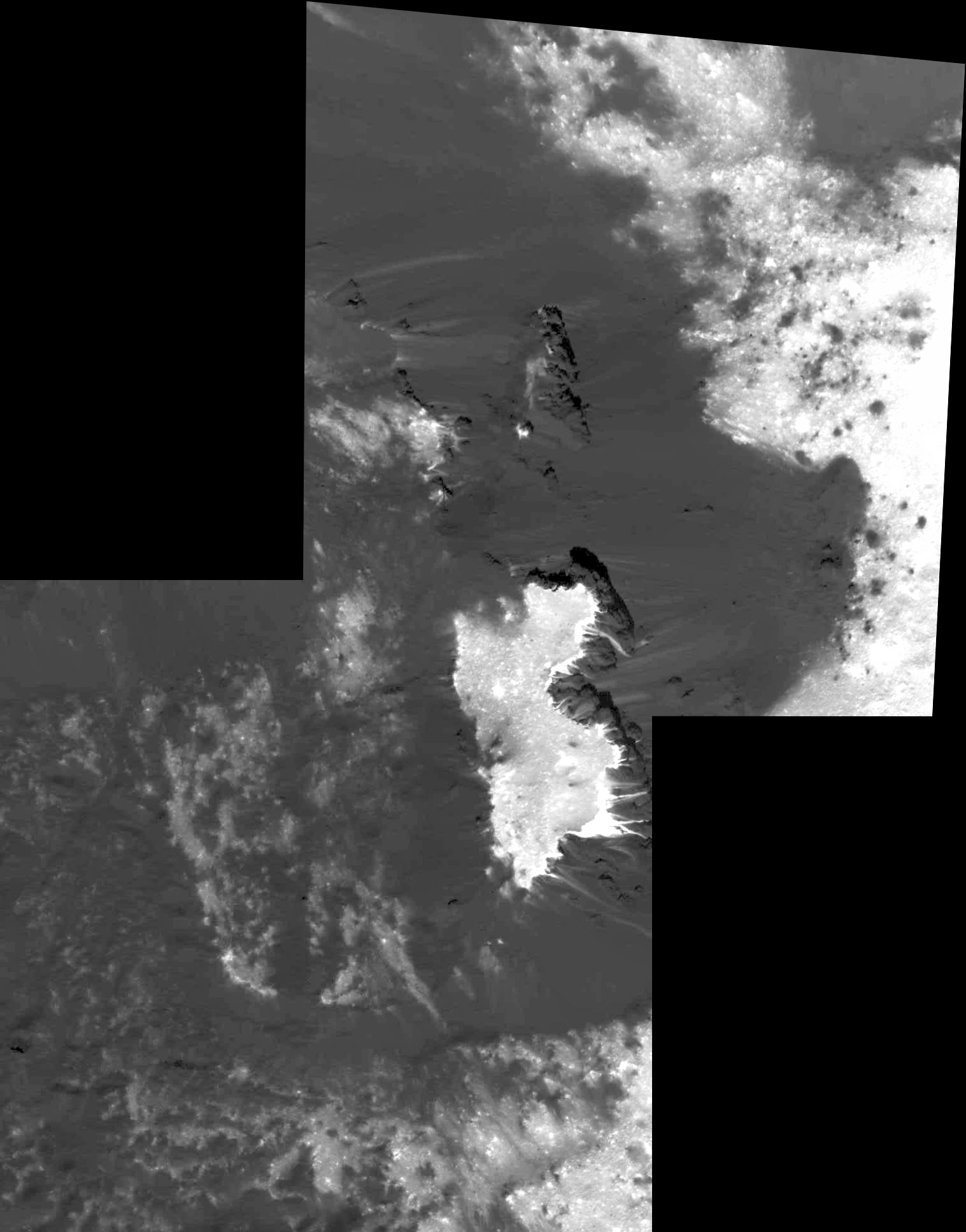
Here's another very cool image, the rim of the Occator crater:
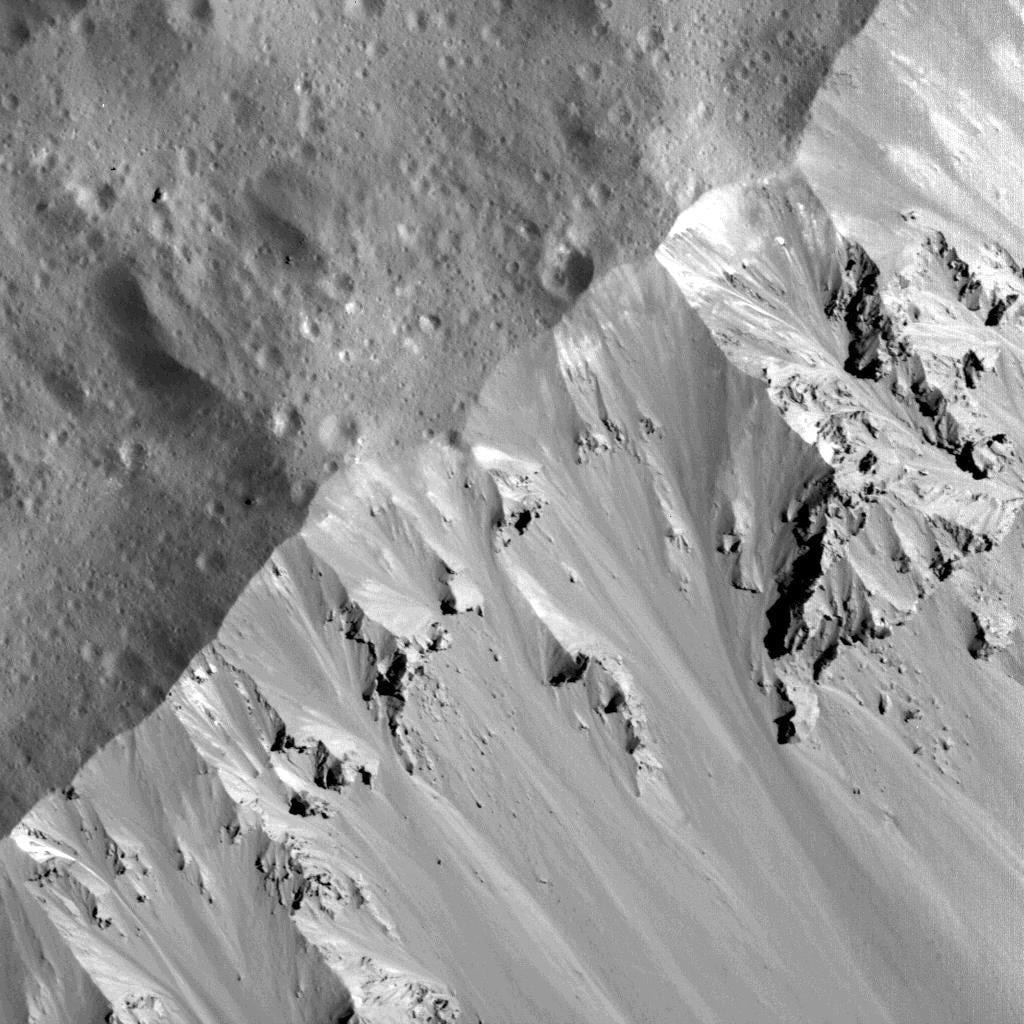
More images can be found here: dawn.jpl.nasa.gov...
Dawn's Latest Orbit Reveals Dramatic New Views of Occator Crater
NASA's Dawn spacecraft reached its lowest-ever and final orbit around dwarf planet Ceres on June 6 and has been returning thousands of stunning images and other data.
The flight team maneuvered the spacecraft into an orbit that dives 22 miles (35 kilometers) above the surface of Ceres and viewed Occator Crater, site of the famous bright deposits, and other intriguing regions. In more than three years of orbiting Ceres, Dawn's lowest altitude before this month was 240 miles (385 kilometers), so the data from this current orbit bring the dwarf planet into much sharper focus.
Here's amosaic of a prominent mound located on the western side of Cerealia Facula (the famous bright spot in the Occator crater):

The wealth of information contained in these images, and more that are planned in the coming weeks, will help address key, open questions about the origin of the faculae, the largest deposits of carbonates observed thus far outside Earth, and possibly Mars. In particular, scientists have been wondering how that material was exposed, either from a shallow, sub-surface reservoir of mineral-laden water, or from a deeper source of brines (liquid water enriched in salts) percolating upward through fractures.
Here's another very cool image, the rim of the Occator crater:

More images can be found here: dawn.jpl.nasa.gov...
a reply to: wildespace
The chronology is apparent. To say the least.
Here's another very cool image, the rim of the Occator crater:
The chronology is apparent. To say the least.
Fantastic! Did we ever find out what "that bright spot" was?
Scratch that........Used my eyes and looked in the article ...............sodium carbonate
Scratch that........Used my eyes and looked in the article ...............sodium carbonate
edit on 3-7-2018 by CaptainBeno because: (no reason
given)
a reply to: CaptainBeno
As quoted in the OP, sorta. Kinda.
Okey dokey
The wealth of information contained in these images, and more that are planned in the coming weeks, will help address key, open questions about the origin of the faculae, the largest deposits of carbonates observed thus far outside Earth, and possibly Mars. In particular, scientists have been wondering how that material was exposed, either from a shallow, sub-surface reservoir of mineral-laden water, or from a deeper source of brines (liquid water enriched in salts) percolating upward through fractures.
Okey dokey
edit on 7/3/2018 by Phage because: (no reason given)
Beautiful images. They're almost Earth-like in their detail.
I don't recall seeing any other extraterrestrial images that show a terrain like this.
I can almost picture Phage hang-gliding over those peaks.
-dex
I don't recall seeing any other extraterrestrial images that show a terrain like this.
I can almost picture Phage hang-gliding over those peaks.
-dex
a reply to: wildespace
Thanks for the thread wildespace.
Ceres is fascinating. Some of you may be interested to know, despite being a dwarf planet within the asteroid belt, Ceres is quite a bit larger than the recently mentioned Enceladus.
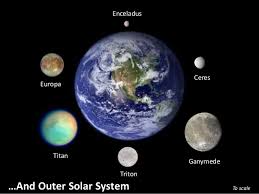
Another fun fact, our own Moon is just a tad bit bigger than Europa in the above image. Considering the comparative sizes of Jupiter, Saturn, and Earth, our Moon is huge, relative to its host planet.
Thanks for the thread wildespace.
Ceres is fascinating. Some of you may be interested to know, despite being a dwarf planet within the asteroid belt, Ceres is quite a bit larger than the recently mentioned Enceladus.

Another fun fact, our own Moon is just a tad bit bigger than Europa in the above image. Considering the comparative sizes of Jupiter, Saturn, and Earth, our Moon is huge, relative to its host planet.
edit on 732018 by CreationBro because: (no reason given)
originally posted by: CreationBro
Another fun fact, our own Moon is just a tad bit bigger than Europa in the above image. Considering the comparative sizes of Jupiter, Saturn, and Earth, our Moon is huge, relative to its host planet.
Back when Pluto was still a planet, it could be said that its moon Charon was even larger in ratio relative to its host planet. Charon is about 50% the size of Pluto.
However, Charon doesn't technically orbit Pluto, but rather Pluto and Charon both orbit around a common point in space. I'd say that makes Pluto-Charon a double-body system, which (to me at least) is another good reason, along with other reasons, why I agree that Pluto should not be classified as a major planet.
edit on 3/7/2018 by Soylent Green Is People because: (no reason given)
What's interesting is that, while most of the white stuff on top of that small mesa is darkened through age (space weathering, dust from
micromiteorites), there are bright areas on the edges of the cliff, with streaks going downslope.
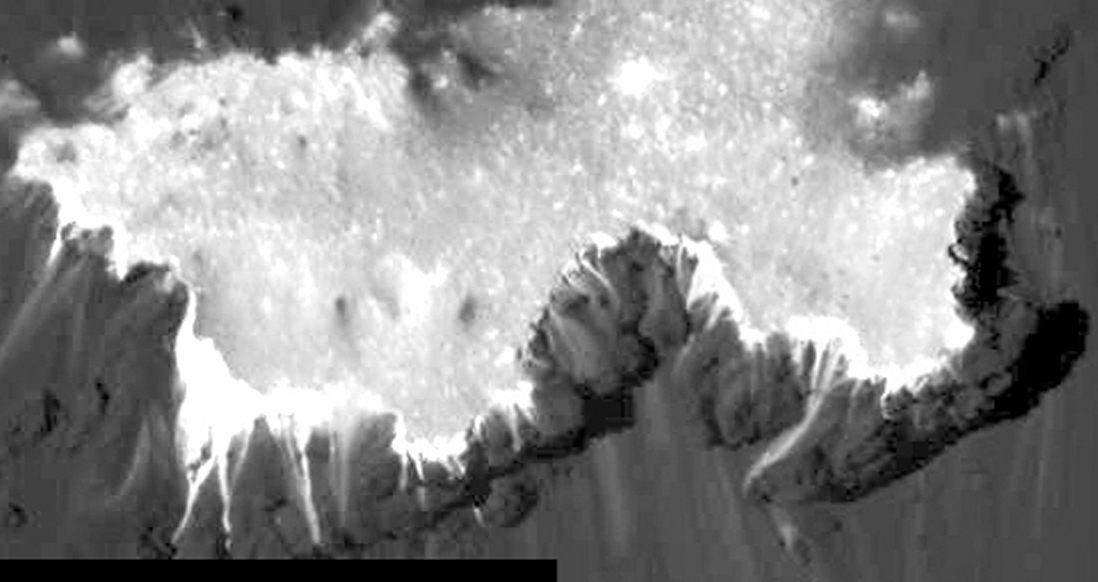
This suggests freshly-exposed material.
We have so much to learn! I hope to see the main bright mound in Occator crater at this resolution.

This suggests freshly-exposed material.
We have so much to learn! I hope to see the main bright mound in Occator crater at this resolution.
The mosaic of the main white spot has been released, albeit in a rather small size:
www.nasa.gov...
PIA21924
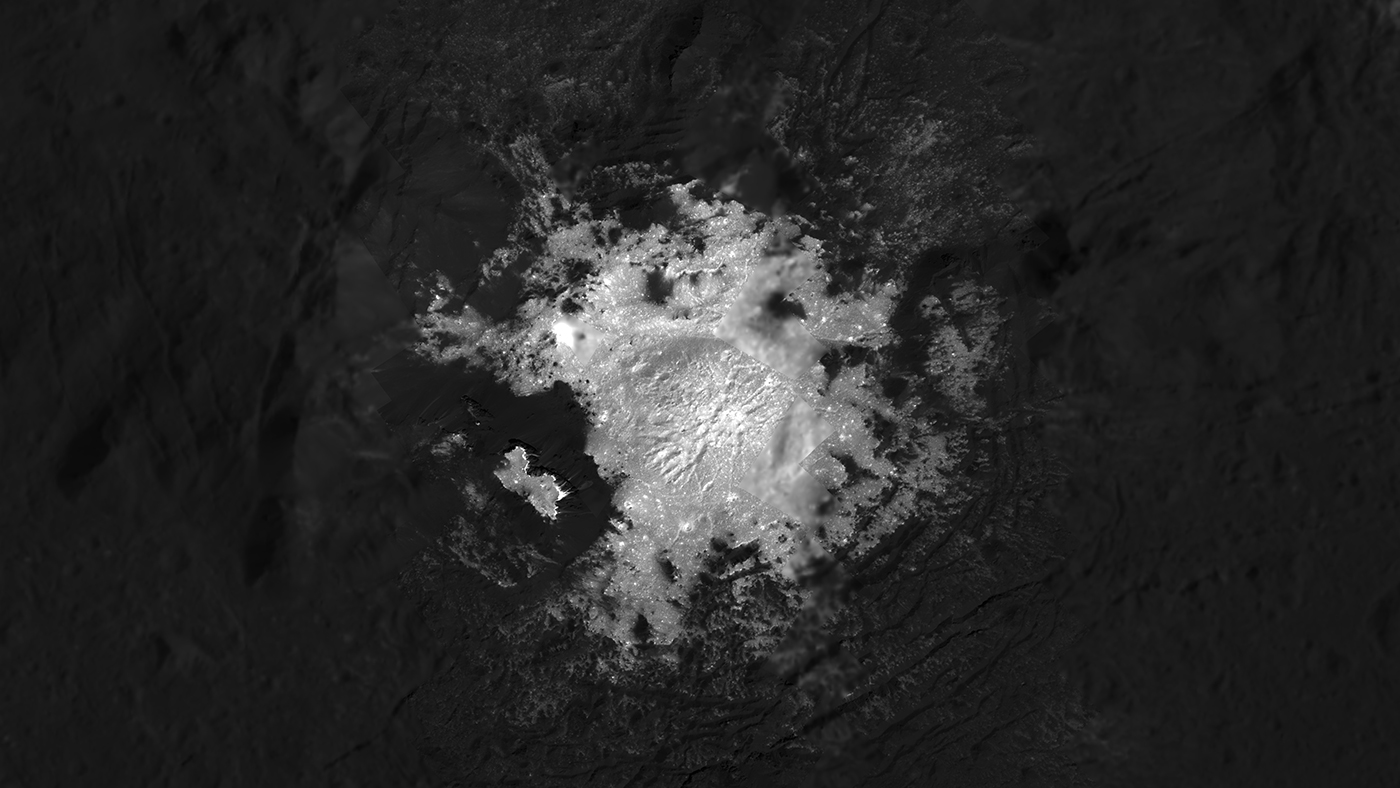
Along with another nearby area:
PIA21925
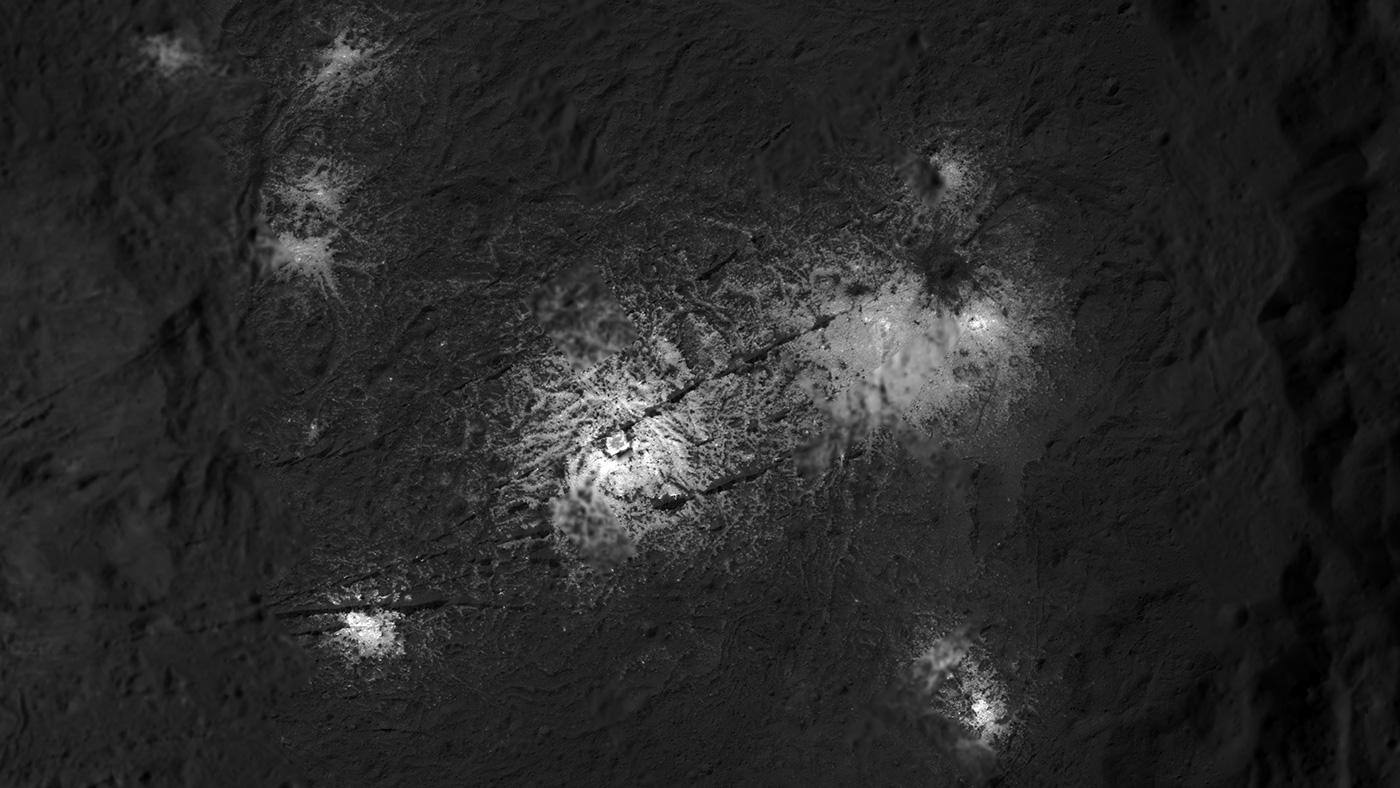
Hoping for full-sized versions soon.
PIA21924

Along with another nearby area:
PIA21925

Hoping for full-sized versions soon.
edit on 17-7-2018 by wildespace because: (no reason given)
We finally got the full mosaic of the central spot, and, wow! photojournal.jpl.nasa.gov...
Full-sized image: photojournal.jpl.nasa.gov...
Cropped and resized for this post:
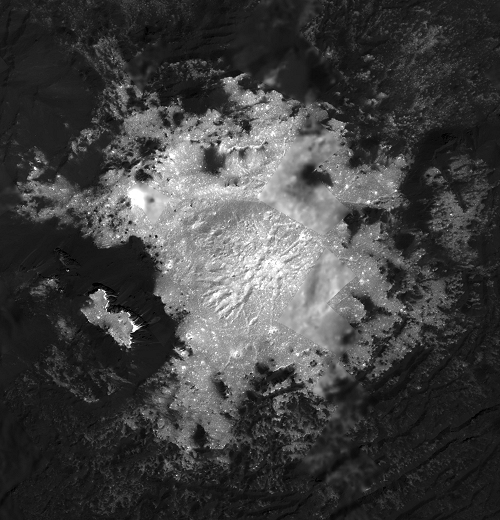
And of course the additional feature (Vinalia Faculae) nearby: photojournal.jpl.nasa.gov...
photojournal.jpl.nasa.gov...
Cropped and rotated for this post:
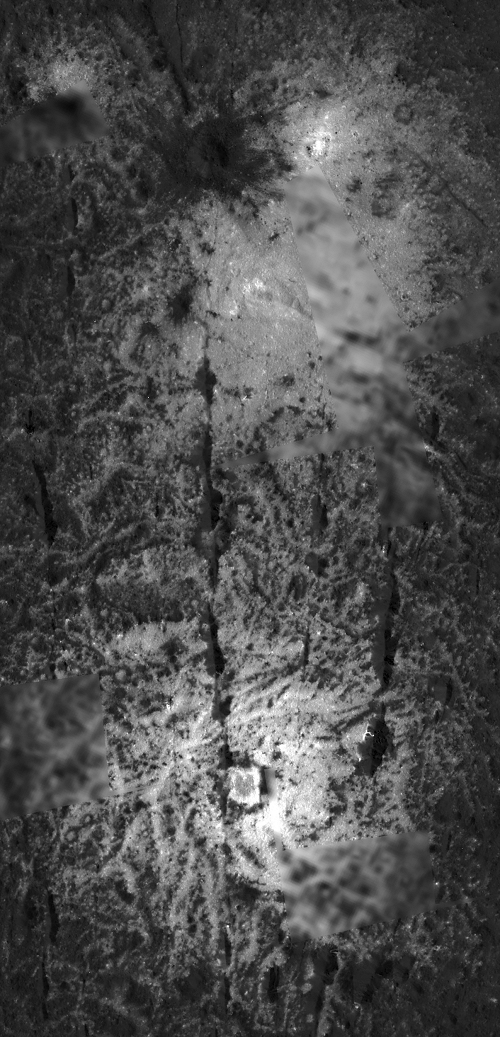
Fascinating stuff!
This mosaic of Cerealia Facula is based on images obtained by NASA's Dawn spacecraft in its second extended mission, from an altitude as low as about 21 miles (34 kilometers). The contrast in resolution obtained by the two phases is visible here, reflected by a few gaps in the high-resolution coverage. This image is superposed to a similar scene acquired in the low-altitude mapping orbit of the mission from an altitude of about 240 miles (385 km).
The increased resolution afforded by the low altitude is revealing intimate details about the relationships between bright and dark materials across the facula, which will help resolve the mystery of its origin.
Full-sized image: photojournal.jpl.nasa.gov...
Cropped and resized for this post:

And of course the additional feature (Vinalia Faculae) nearby: photojournal.jpl.nasa.gov...
photojournal.jpl.nasa.gov...
Cropped and rotated for this post:

Fascinating stuff!
new topics
-
Joe Rogan conspiracy (maybe)
ATS Skunk Works: 45 minutes ago -
Results of the use of the Oreshnik missile system in Dnepropetrovsk
World War Three: 3 hours ago -
Nigel Farage now the Most Favoured UK Politician
Regional Politics: 4 hours ago -
Little Johnny and Larry should team up
General Chit Chat: 10 hours ago -
Will Us use alien technology to fight in ww3?
World War Three: 11 hours ago
top topics
-
Results of the use of the Oreshnik missile system in Dnepropetrovsk
World War Three: 3 hours ago, 10 flags -
Little Johnny and Larry should team up
General Chit Chat: 10 hours ago, 8 flags -
Shane Gillis commercial
Jokes, Puns, & Pranks: 17 hours ago, 4 flags -
Will Us use alien technology to fight in ww3?
World War Three: 11 hours ago, 2 flags -
Nigel Farage now the Most Favoured UK Politician
Regional Politics: 4 hours ago, 2 flags -
Joe Rogan conspiracy (maybe)
ATS Skunk Works: 45 minutes ago, 1 flags
active topics
-
President-Elect TRUMP Picks Former Florida A.G. PAM BONDI to be U.S. Attorney General.
2024 Elections • 52 • : VariedcodeSole -
Well we know Putins ICBMs won't fail in their silos
World War Three • 190 • : Lazy88 -
Results of the use of the Oreshnik missile system in Dnepropetrovsk
World War Three • 75 • : Bluntone22 -
President-Elect DONALD TRUMP's 2nd-Term Administration Takes Shape.
Political Ideology • 238 • : WeMustCare -
Will Us use alien technology to fight in ww3?
World War Three • 11 • : BeyondKnowledge3 -
A Mysterious Orb filmed over NYC by local news
Aliens and UFOs • 25 • : ArMaP -
The Popular Vote does not matter
Political Issues • 14 • : texas thinker -
Joe Rogan conspiracy (maybe)
ATS Skunk Works • 0 • : AlroyFarms -
Shane Gillis commercial
Jokes, Puns, & Pranks • 2 • : Flyingclaydisk -
Little Johnny and Larry should team up
General Chit Chat • 2 • : texas thinker
19
